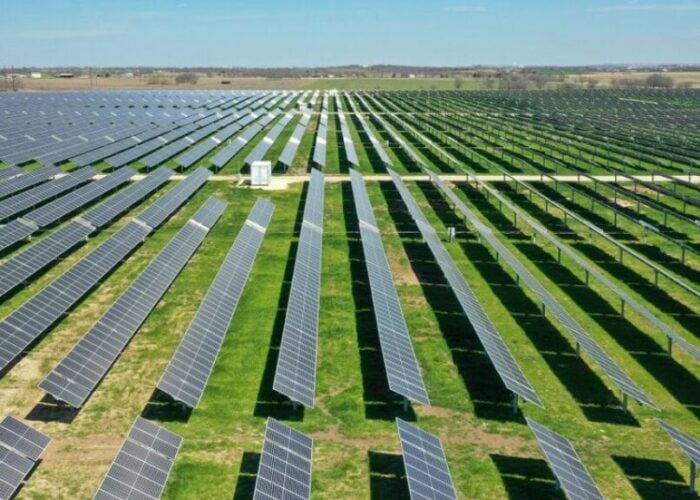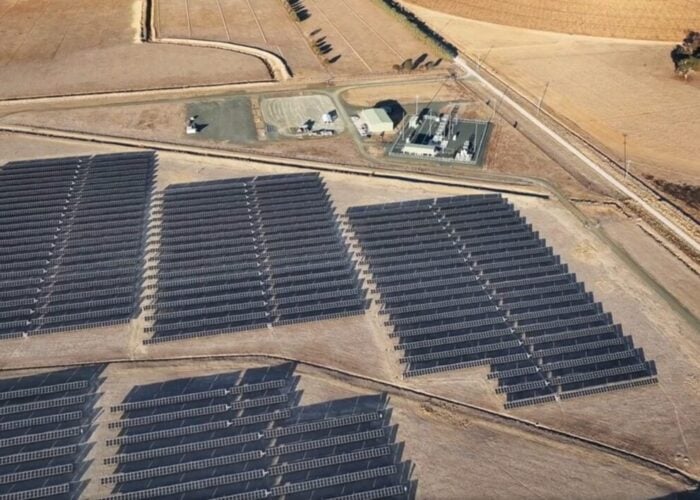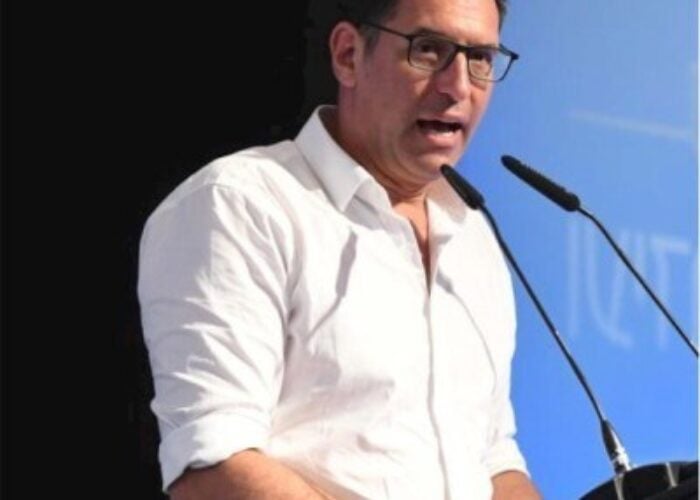
“For far too long, people across this country have faced the volatility of fossil fuel prices,” said Michael Shanks MP, parliamentary under-secretary of state for energy, who gave the keynote address for this year’s Clean Power 2030 Summits, held in London this week by Solar Media.
His speech started two days of discussion about the UK’s clean energy space, which is entering a critical juncture following the publication of the long-awaited UK solar roadmap. The plan aims to install solar systems on nine million homes by 2030, and increase the UK’s total operating solar capacity to 47GW by the end of the decade. Many of Shanks’ comments focused on the financial robustness of the UK solar industry, reflecting growing investor appetite in the global solar sector as the technology leads the ongoing decline in levelised cost of electricity (LCOE) seen across a number of renewable generation systems.
Try Premium for just $1
- Full premium access for the first month at only $1
- Converts to an annual rate after 30 days unless cancelled
- Cancel anytime during the trial period
Premium Benefits
- Expert industry analysis and interviews
- Digital access to PV Tech Power journal
- Exclusive event discounts
Or get the full Premium subscription right away
Or continue reading this article for free
“For far too long, we’ve been paying the price for our exposure to gas, and we need to do what we possibly can to remove that volatility, and this sprint to home-grown power is part of that,” said Shanks.
“But it’s also about how we invest in supply chains and jobs in this country … so we can capitalise right across the country,” Shanks continued, highlighting how meeting the UK’s solar targets will not simply require the installation of new capacity, but a more comprehensive investment from industry in grid infrastructure, manufacturing capacity and training initiatives.
This scale of commitment of both domestic and foreign investment into the UK clean energy space in general, and solar in particular, is required to meet the country’s 2030 targets and deliver on the clean energy transition.
Responding to the roadmap
Unsurprisingly, the UK Solar Roadmap was a key topic of conversation at the event, with Shanks explaining that prime minister Keir Starmer had made the clean power goal a “national mission”. He emphasised that strong financial fundamentals will need to underpin this transition in his speech at the beginning of the summits, calling the energy transition “the economic opportunity of the 21st century”.
Shanks went on to point out that meeting these targets, and particularly providing the kind of investment needed to meet these goals, would require significant collaboration between the government and industry.
However, the sheer scale of investments in the global solar sector – which exceeded US$500 billion in 2024 – means that appetite for new investments has “cooled off”, according to James Pinney, country head of Northern Europe at Cubico Sustainable Investments, who spoke to PV Tech Premium earlier this year.
Fortunately, many of the industry experts who spoke to PV Tech Premium at this week’s event expressed greater optimism about investing in UK solar, following the publication of the roadmap. Tom Hutchison, CEO of the Montrose Port Authority in Scotland, Europe’s largest chain and anchor port that has secured Eco Port status for its clean energy commitments, described his approach to new renewable energy investments as “aggressive”.
“We’ve been really aggressive as a port authority around our decarbonisation efforts,” he told PV Tech Premium at the Clean Power 2030 Summits. “We have big plans around solar, storage and green hydrogen, and even wind turbines.”
“We also have the potential for a green hydrogen facility external to the port on land that we’ve purchased,” Hutchison continued, highlighting how solar is often a good fit for projects that look to co-locate several types of renewable electricity generation. “We’ve purchased an additional 45 acres of land external to the port, and we’re going to be constructing lots of warehouses, with roof space for solar, so it’s a natural fit to install solar.”

Ensuring an attractive investment landscape
However, the involvement of industry, particularly from an investment perspective, will require the UK solar sector to be an attractive investment destination. While some speakers suggested that the UK is still an “attractive” investment space, Shanks acknowledged that structural challenges, such as macroeconomic factors and a lack of available grid capacity, could dissuade investment in the sector.
“[Past precedent is] a sign to investors that the UK takes too long to build things,” said Shanks, who noted that there is more than 700GW of clean energy capacity currently awaiting grid connection in the UK queue. “We need to give certainty to investors that if you invest in a project in the UK, it will get built”.
“[The Contract for Difference (CfD) process] has played a transformational role in the UK’s energy system for more than a decade now, and we’ve taken the expansion of renewables from just 6% of electricity generation in 2010 to more than 50% today,” noted Neil McDermott, CEO of the Low Carbon Contracts Company (LCCC), which manages the CfD system in the UK. He pointed to the scheme as an effective example of government and industry working together to de-risk investments in the UK solar space.
“We’ve attracted more than £60 billion of private investment into the infrastructure that produces clean power,” McDermott added, when he spoke about the upcoming Allocation Round 7 (AR7).
Existing market mechanisms may not be sufficient, however, particularly as solar looks set to account for an increasingly large proportion of the UK’s electricity generation. The transition for developers, then, may not be in securing project approval and sourcing investment for projects, but finding offtakers, and securing the kind of power purchase agreements (PPAs) to make the project commercially viable in the first place.
“Clean Power 2030 isn’t just about generation,” said Keith Gains, managing director at Quinbrook Infrastructure Partners, which started commercial operations at the UK’s largest solar project, Cleve Hill, this week. “We’ve got a 15-year indexing PPA with Tesco there; it’s harder, but you can get the contracts and build the projects.”
“From our perspective, if we can get rid of zonal pricing and the chat around that, it would be helpful,” he continued, highlighting uncertainty around the Review of Electric Market Arrangements (REMA) discussion. “And we could do with certainty around REMA.”
McDermott suggested, however, that these market and industry dynamics will cause the CfD process – suggested by many as the only route to market for standalone solar projects in the UK – to change to better accommodate these projects.
“The CfD portfolio won’t just grow, it will evolve,” said McDermott, suggesting there is flexibility in the UK’s routes to market. “We’ll see more solar-plus-storage projects, participation from smaller developers and community-led schemes, interest in hybrid projects – combining multiple technologies under one revenue stream – and continued downward pressure on costs.”

Tackling the green skills gap
“Part of the reason we’ve tried to give as much certainty as possible about the long-term plans is to give companies the scope to drive forward the skills investment in this space,” explained Shanks, in his opening speech, touching on the need to better train UK workers to deliver the kind of rapid change to the energy mix that the Clean Power 2030 targets will need. A report from SolarPower Europe on Europe’s solar employment found that while the sector reached 800,000 total jobs last year, the rate of new job additions had slowed in recent years as capacity additions have slowed.
“Last week, I was at Scottish Power, where they were investing £4 billion [in supply chains] … what that has meant that the supply chain has been able to go away and recruit apprentices and transition workers from other industries,” continued Shanks, giving an example of industry supporting the government’s clean energy targets.
“I believe the figure was 35,000 new jobs [and] that’s great” added Jason Kirrage, senior technical marketing manager at SolarEdge, who told PV Tech Premium of his optimism following the publication of the government’s roadmap. “I started my journey in 1987 and I’d like to see the same amount of people who started then start now; but there’s more people retiring from than entering the industry now. It’s going to be a safe and secure route to employment in the future.”
As part of his holistic approach to the energy transition in Montrose, Hutchison suggested that his port authority will invest in new training programmes to educate and train local people in renewable energy operations and maintenance.
“We’re looking at developing a skills academy within Montrose, renovating the old customs house in Montrose and spending a few million [pounds] on that, and part of that will be to take kids out of high school and put them in more apprenticeship schemes, and try to get them into offshore a bit more quickly, so that we do keep the local community involved,” he said.
“It’s enabling that transition, even for people who work in the oil and gas industry to be able to transition across to work in the renewables sector,” he continued, highlighting the importance of training programmes that cater to re-skilling in a region like Scotland where there is a strong legacy of oil and gas employment.
These comments echo confidence expressed elsewhere during the summit that reskilling workers from other sectors will be important to deliver the UK’s energy transition, if industry can be more involved in the training processes.
David Mack, CEO of module cleaning provider EverBlue, which has sought to expand into the US, told PV Tech Premium about how his company has invested in a more “systematised” approach to training, to ensure workers can be trained in similar skills across different markets and industries.
“For me, it’s about ensuring that the people at those companies that have lived through the last ten years of the solar industry in the UK, and other regions, look at the lessons they’ve learned over the last ten years, and create training systems that include those lessons,” said Mack.
“Someone can pick up a system – software and training for doing a particular role or a particular service – and it has everything they need; if we can systematise those roles, we can replicate that role and expand the industry while maintaining a high quality.”
Speakers across the event agreed that delivering not just the energy transition, but this high-quality transition, would require ambition, which Shanks touched on at the very beginning of the summit.
“If government isn’t ambitious about the future, you can’t expect anyone else to be ambitious either.”






